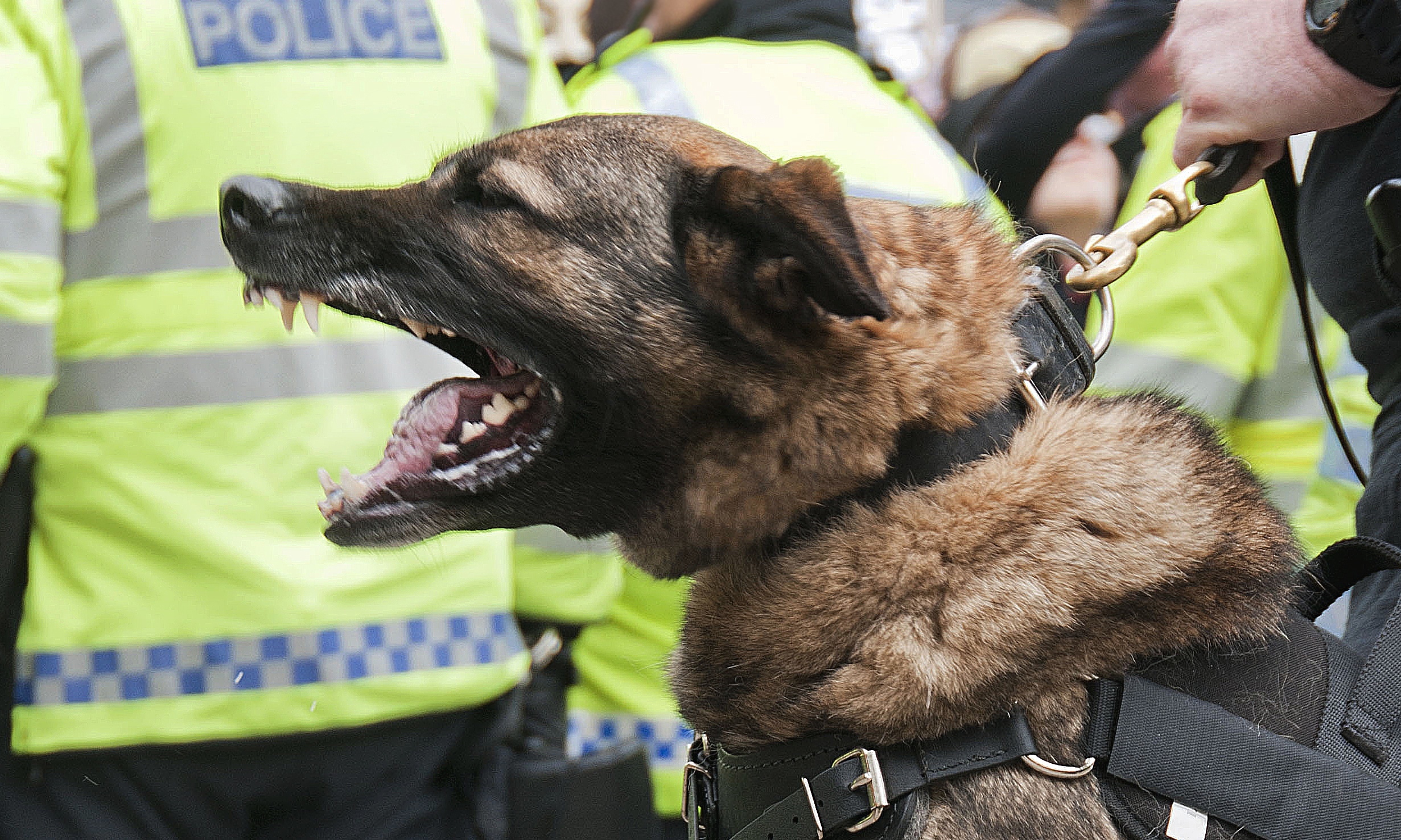
A Sunday Post probe reveals one cop received more than £4,000 compensation for an injury caused by a police dog.
Another member of staff took legal action after being chomped on by a patrol horse.
Two others are suing for police dog bites suffered while on duty.
The revelations come only weeks after it emerged members of the public injured in crashes with police vehicles have to wait up to four years for compensation.
Details of the animal-related compensation claims were revealed following a lengthy Freedom of Information battle between The Sunday Post and Police Scotland.
Jonathan Isaby, of the TaxPayers’ Alliance, said: “It’s only right that officers are compensated where there is genuine blame, but officers and forces must remember that every penny spent on compensation is a penny not spent front-line policing.”
Tory MSP Alex Johnstone said the reluctance of the force to make the details public “shows they have something to hide”.
He added the police “must get a grip on this compensation culture before their reputation slides even further”.
Labour’s Graeme Pearson said the force “has developed an unfortunate habit of refusing to divulge information the public have a right to know”.
Force insiders claim police officers injured in the line of duty are encouraged to pursue compensation.
One serving officer, who asked not to be named, said: “It’s something all officers are aware of.
“If you’re injured in the line of duty, most see it as a given that compensation will follow.
“It’s a dangerous occupation, I’d argue this is only right and proper.”
Police bosses in Scotland face having to pay out almost £1.4 million in compensation to their own staff.
It emerged last year that 62 claims from former and serving officers had been lodged against the national force since it was established in 2013.
Worried chiefs set aside £1,378,000 to cover the unsettled cases.
South of the border, forces are paying more than £50,000 a week in injury compensation and claims include £2,750 to an officer who was bitten by a police dog
However, lawyers argue it can be tough for members of the public to pursue claims against the police.
They point to figures which show only 40% of the 549 “motor liability” claims resolved in Scotland since 2013 resulted in a payout.
One member of the public left waiting years for compensation is Leona Ryce.
The 21-year-old suffered internal bleeding and cracked ribs after she was hit by a police car she claims was speeding without its lights or siren on in Bo’ness, West Lothian, in 2012.
“I’m disgusted about the way they’ve been about the whole thing,” she said.
A Police Scotland spokesman responded: “All claims are assessed in line with an agreed claims process.”
FOI Laws
The release of this information, under Freedom of Information laws, came after a protracted row with Police Scotland.
Top brass at the force initially refused parts of our simple request, saying to give us the data would disclose too much “personal information”.
Payouts and locations of incidents were deemed too sensitive.
But after we challenged their bizarre stance the decision was overturned internally.
Even then the bungling force handed us the wrong stats.
Embarrassingly, the force admitted the figures it supplied were incorrect.
We then had to wait a further week for new data.
Legally, a FOI request must be answered within 20 working days of it being made – we made this request as far back as December.
The lengthy delays saw the FOI watchdog, the Scottish Information Commissioner, threaten to investigate the force.
That seemed to spark them into action and it finally disclosed the info we wanted last week.
READ MORE
In pictures: Dramatic scenes from Braehead police training exercise

Enjoy the convenience of having The Sunday Post delivered as a digital ePaper straight to your smartphone, tablet or computer.
Subscribe for only £5.49 a month and enjoy all the benefits of the printed paper as a digital replica.
Subscribe